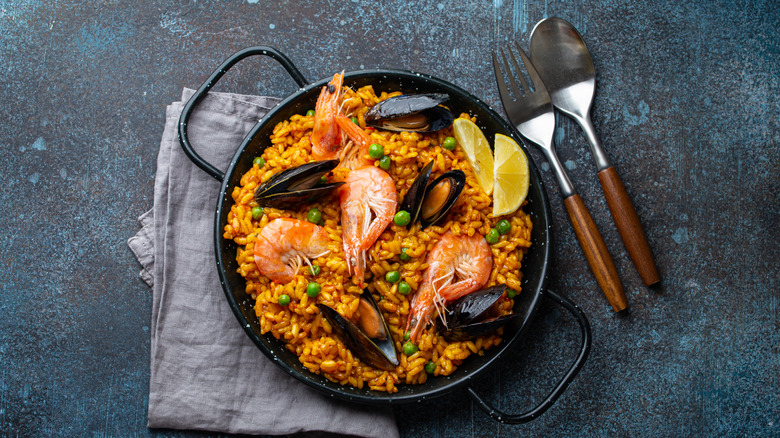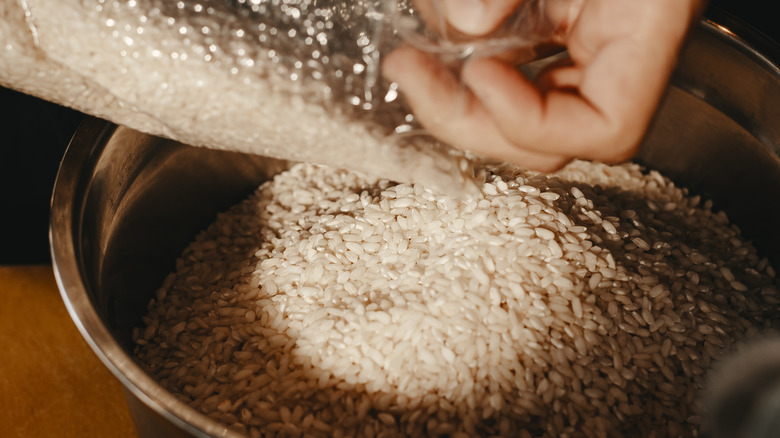The Absolute Best Type Of Rice To Use In Paella
So, you've decided to make paella, perhaps the most famous Spanish dish of all time. To do it right, a few things are indispensable — and oddly, your choice of protein isn't one of them: Paella can feature everything from lobster to rabbit to artichokes or some combination thereof. One of the things you'll definitely be needing (besides a healthy amount of saffron) is a large, round, flat, and shallow two-handled pan (the dish's name comes from the Spanish word for frying pan) because that's how you'll best achieve the socarrat — that crisp, caramelized crust that forms at the bottom of the paella. Socarrat's key ingredient is starch, so you're going to need a magical, short-grain, starchy paella rice that absorbs a ton of flavorful liquid. Luckily, such a thing exists and is called Bomba rice.
Like most of our favorite foods, paella has humble beginnings. It's essentially a rice dish, rounded out with whatever vegetables and meats were available to the working people who were making it. Since Bomba rice originated in the Valencia region, it was most often used. It also happens to be perfectly suited to the task: High in starch, Bomba rice grains absorb as much as three times their volume in liquid while still retaining their shape, which is extraordinary. This is essential for making a paella that is neither a dried-out, flavorless crumble nor disgusting mush.
Bomba is ideal but not irreplaceable
Bomba has more amazing characteristics. For one thing, its nutty flavor will add an extra dimension to your paella. For another, it cooks differently from other rice grains: Instead of splitting lengthwise, Bomba grains plump and expand, creating the kind of seal that will begin to form a socarrat at the bottom of the paella pan once the broth has evaporated.
If Bomba is not available, there are other very suitable Spanish short-grain varieties to choose from. Senia and Bahia also absorb a high amount of liquid but tend to get creamy. Calasparra rice will also work well, as will that old risotto standby arborio — although, again, it will make your paella more on the creamy side. If none of these types are available to you, simply choose a sturdy, non-perfumed medium- or short-grain rice — particularly a domestic variety known as Calrose. Medium-grain rice is acceptable for making paella but forget about the long-grain varieties.

